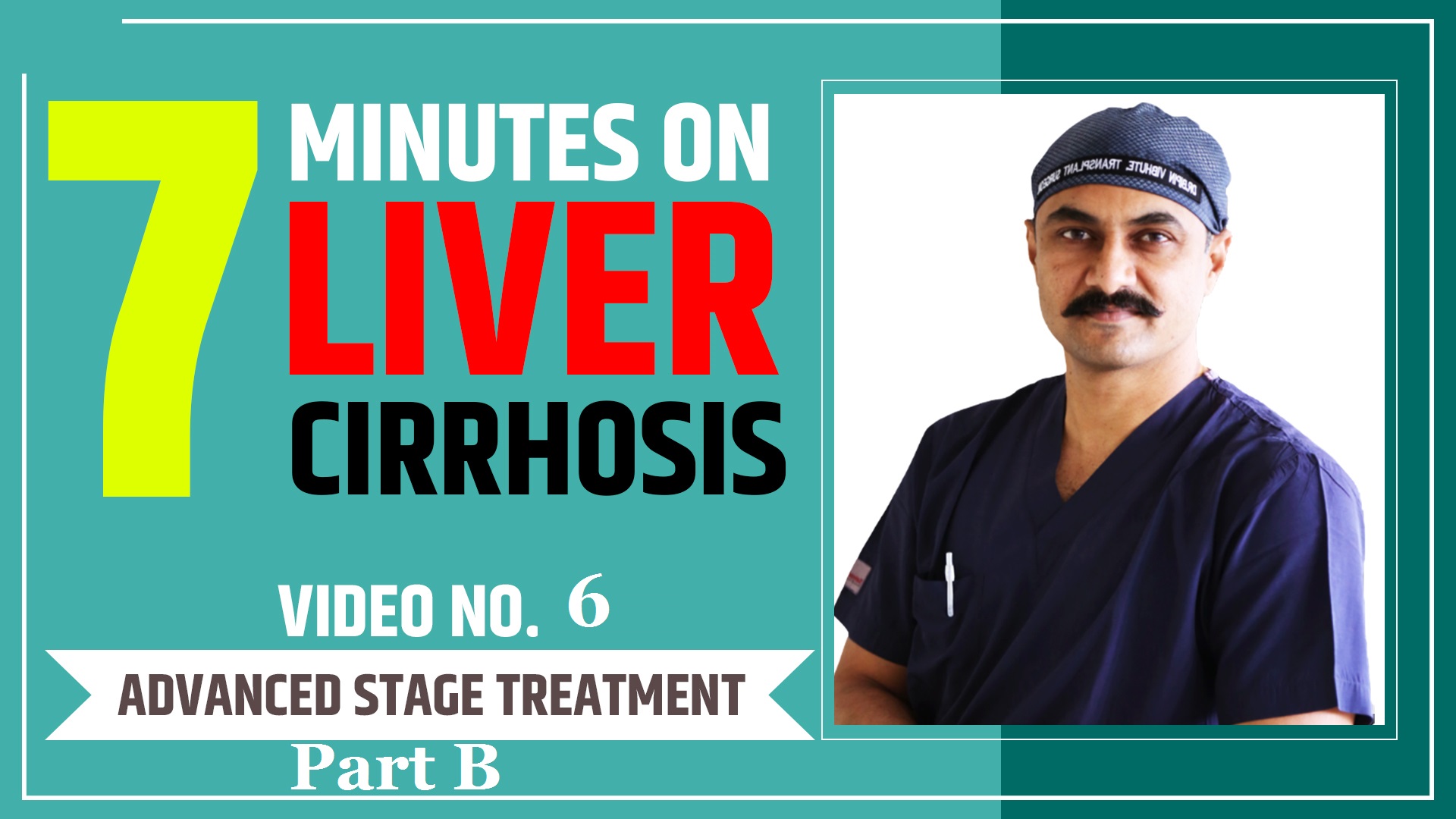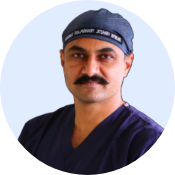Pravin Patole (Transplant Year: 2021)
Treatment : Liver Transplant
Saket Khadakkar (Transplant Year: 2021)
Treatment : Liver Transplant
Pravin Patole (Transplant Year: 2021)
Treatment : Liver Transplant
Saket Khadakkar (Transplant Year: 2021)
Treatment : Liver Transplant
Pravin Patole (Transplant Year: 2021)
Treatment : Liver Transplant
Saket Khadakkar (Transplant Year: 2021)
Treatment : Liver Transplant
Error: Contact form not found.

हैलो दोस्तों हमने लिवर सिरोसिस यानि की “7 मिनिट्स ऑन लिवर सिरोसिस” पर एक नई वीडियो श्रृंखला शुरू की है । इस श्रृंखला में, हम 7 मिनट के लिए लीवर सिरोसिस पर 7 वीडियो बनाने जा रहे हैं। इस श्रृंखला को बनाने का उद्देश्य इस लीवर समस्या को गहराई से समझना और इस पर आवश्यक उपाय करना है। तो पूरी श्रृंखला के लिए हमारे साथ बने रहें।
“7 मिन ऑन लिवर सिरोसिस” के इस छठे वीडियो में, मैंने लीवर सिरोसिस के एडवांस्ड चरण के उपचार के भाग दो , पर जानकारी दिया है । सिरोसिस लिवर डिसीज की एक जटिलता है जिसमें लिवर सेल्स की हानि होती है और लिवर में अपरिवर्तनीय निशान बन जाते हैं। किसी भी अन्य बीमारी की तरह लीवर सिरोसिस के भी अपने कुछ लक्षण होते हैं. लीवर सिरोसिस (Liver Cirrhosis) लिवर की ऐसी बीमारी है, जो किसी भी व्यक्ति के लिए खतरनाक साबित हो सकती है।
आज के दौर में जब खाने की कोई भी चीज़ पौष्टिक नहीं है, ऐसे में ये स्वास्थ संबंधी कई सारी समस्याओं का कारण बनती हैं। इनमें लीवर सिरोसिस भी शामिल हैं,जो समय बीतने के साथ घातक रूप ले सकती है और इसका इलाज केवल लिवर ट्रांसप्लांट से ही संभव हो सकता है। इसी आवश्यकता को समझते हुए हमने “7 मिनिट्स ऑन लिवर सिरोसिसइस” श्रृंखला शुरू की है जिसके मध्यम से मैंने लीवर सिरोसिस की आवश्यक जानकारी देने की कोशिश की है।
लीवर सिरोसिस के एडवांस्ड चरण के उपचार पर वीडियो जरूर देखें: https://youtu.be/4L8MuH8dkoU
Hello friends, Welcome back to my channel. As you know that we had started a new series on “7 Minutes on Liver Cirrhosis”. In this series, we are going to make 7 Videos on Liver cirrhosis for 7 min.
The purpose of making this series is to deeply understand this Liver Problem and get the necessary action against this Liver Issue. So stay tuned with us for the complete series. In this 6th video of “7 Min on Liver Cirrhosis,”
I had explained about second part of “Advanced Stage Treatment of Liver Cirrhosis”. Cirrhosis is a complication of liver disease that involves loss of liver cells and irreversible scarring of the liver.

Garlic and It's Benefits In Liver Diseases 1. Garlic is one of the most important ingredients in all Indian dishes, and people across the globe have identified its importance....